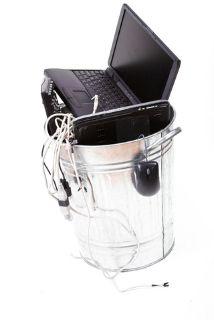Fluorescent Lamps

Due to the Federal Environmental Protection Agency's (EPA) regulation on lamps, which went into effect in 2000, most non-residential facilities are required by law to properly dispose of their lamps. Landfills are increasingly intolerant of lamps from non-residential sources due to the amount of mercury found in each lamp. Recycling of the lamp components is the EPA-recommended method of disposal and helps minimize facility liability. Here's why:
- A standard fluorescent lamp contains 22-28 milligrams of mercury
- A single four-foot fluorescent tube contains up to 50 milligrams of mercury
- Just one milligram can contaminate up to a 2-acre region
- The EPA estimates that over 800 million lamps are produced each year
- Mercury was number three on the 2007 list of hazardous substances as outlined by the Agency for Toxic Substances and Disease Registry
Batteries

Americans purchase nearly three billion dry-cell batteries every year to power radios, toys, cellular phones, watches, laptop computers and portable power tools. Inside a battery, heavy metals react with chemical electrolyte to produce the battery's power. Some of these toxic heavy metals in batteries include nickel cadmium, alkaline, mercury, nickel metal hydride and lead acid, which can threaten our environment if not properly discarded. Wet-cell batteries, which contain a liquid electrolyte, commonly power automobiles, boats or motorcycles. Nearly 99 million wet-cell lead-acid car batteries are manufactured each year. Improperly disposed batteries can pollute lakes and streams as the metals vaporize into the air. When batteries are burned, they can contribute to heavy metals that could potentially leach from solid waste in landfills, expose the environment and water to lead and acid, contain strong corrosive acid, and cause burns or danger to eyes and skin. Recycling saves resources when recovered plastic and metals are used to make new batteries.
Electronic Equipment

Electronics are the fastest-growing part of the world's trash problem, with an estimated 50 million computers becoming obsolete annually. Every day, our nation disposes of mountains of e-waste containing hazardous and toxic materials that pose significant environmental risks. Many states and landfills have already banned the disposal of obsolete electronics containing cathode ray tubes. Businesses could be subject to fines and penalties for improper disposal of obsolete electronic equipment. Did you know...
- CRT monitors that contain toxic lead oxide that can leach into the ground water.
- Plastic components of electronic equipment can release dangerous gases if incinerated.
- PC-related components and batteries contain; nickel, zinc, mercury, and other heavy metals